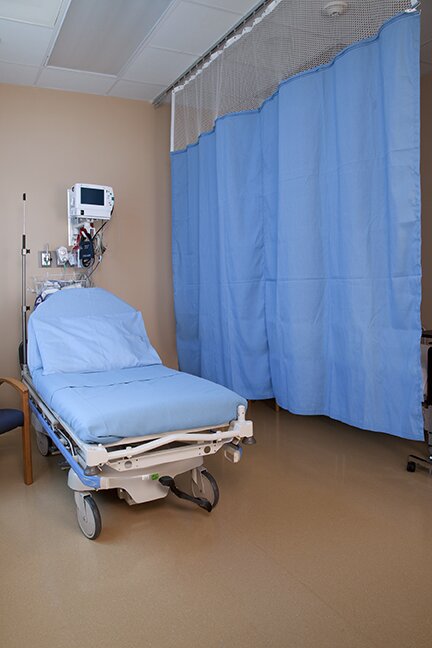Clinical Background
 Numerous studies published in peer-reviewed journals highlight the impact of the patient environment on the problem of healthcare associated infections, and further demonstrate the contribution of fabrics, including privacy curtains, to that problem. The citations below link to complete abstracts of each study.
Numerous studies published in peer-reviewed journals highlight the impact of the patient environment on the problem of healthcare associated infections, and further demonstrate the contribution of fabrics, including privacy curtains, to that problem. The citations below link to complete abstracts of each study.
The Patient Environment Matters in the Battle against Hospital Acquired Infection
“Environmental contamination may contribute to transmission of healthcare pathogens when healthcare workers contaminate their hands or gloves by touching contaminated surfaces, or when patients come into direct contact with contaminated surfaces.”
“Transmission of MRSA from contaminated environmental sources to patients has occurred in a variety of settings.”
Contamination of Hospital Surfaces is a Persistent Problem
“One critical factor for transmission of a microorganism from a person (patient or health care worker) to the environment and then to another person is the ability of that microbe to survive on that environmental surface.”
“Data in this study indicate that staphylococci and enterococci can survive for days to months after drying on commonly used hospital fabrics and plastic… Viability of enterococci on fabrics tended to be longer than their reported survival on other hospital surfaces.”
“One can easily postulate how these fabrics could become vectors for the spread of staphylococcal or enterococcal organisms as a health care worker moves from one patient to another, and the sleeve of his lab coat, for example, contacts different patients”
Touching Frequently Contaminated Curtains May Pass that Contamination to Healthcare Worker Hands
“In a culture survey, we found that 42% of hospital privacy curtains were contaminated with vancomycin-resistant enterococci, 22% with methicillin-resistant Staphylococcus aureus, and 4% with Clostridium difficile.”
“Hand imprint cultures demonstrated that these pathogens were easily acquired on hands.”
“Hospital curtains are a potential source for dissemination of healthcare-associated pathogens.”
Harmful Bacteria may Move from Surface to Surface via Hands of Healthcare Workers
“We sought to determine the frequency of VRE transmission from sites in the environment or on patients’ intact skin to clean environmental or skin sites via contaminated hands of HCWs during routine care.”
“Vancomycin-resistant enterococci were transferred from contaminated sites in the environment or on patients’ intact skin to clean sites via HCW hands or gloves in 10.6% of opportunities. Controlling VRE by decontaminating the environment and patients’ intact skin may be an important adjunctive infection control measure.”